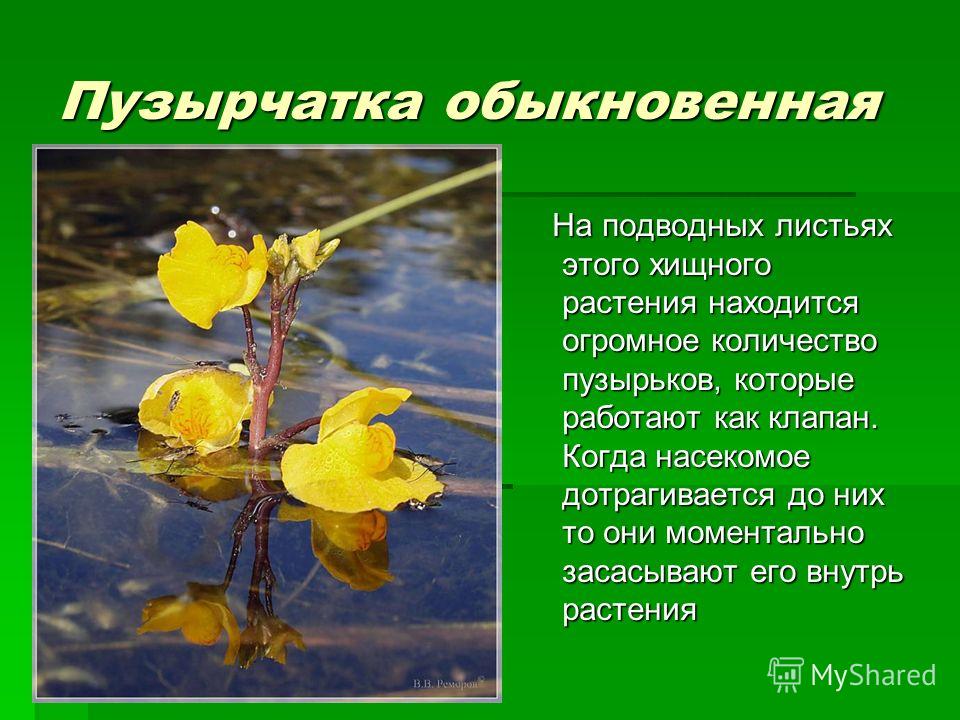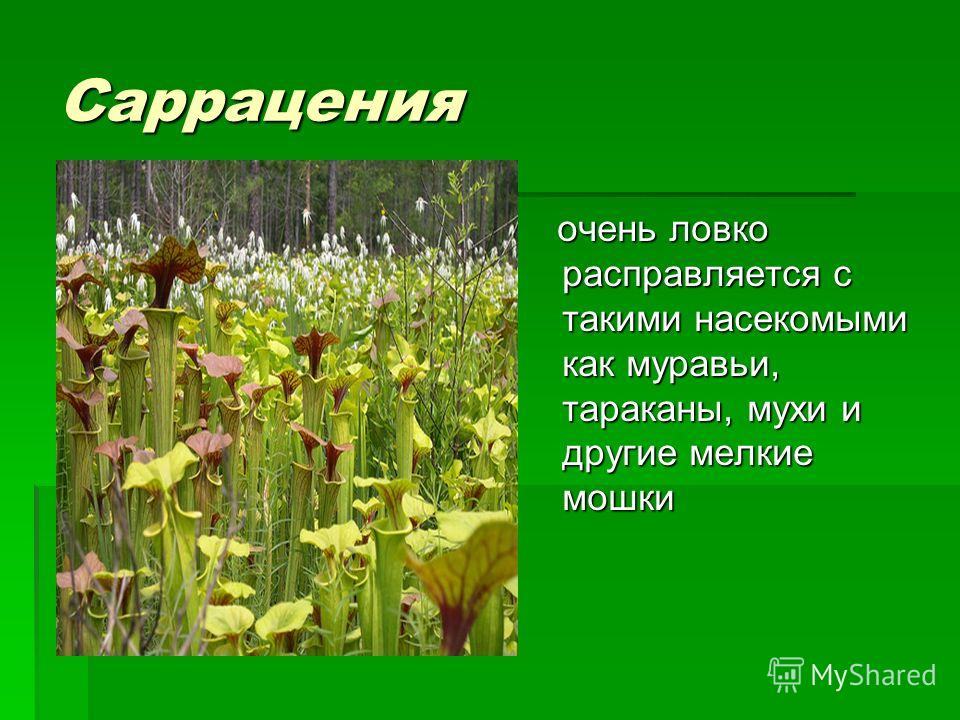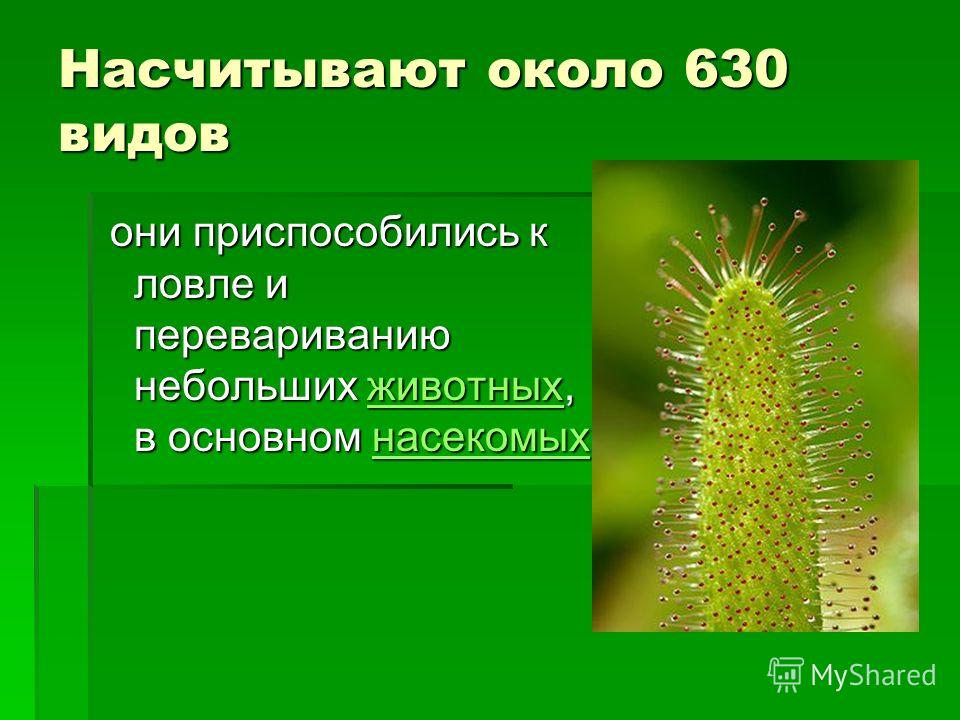
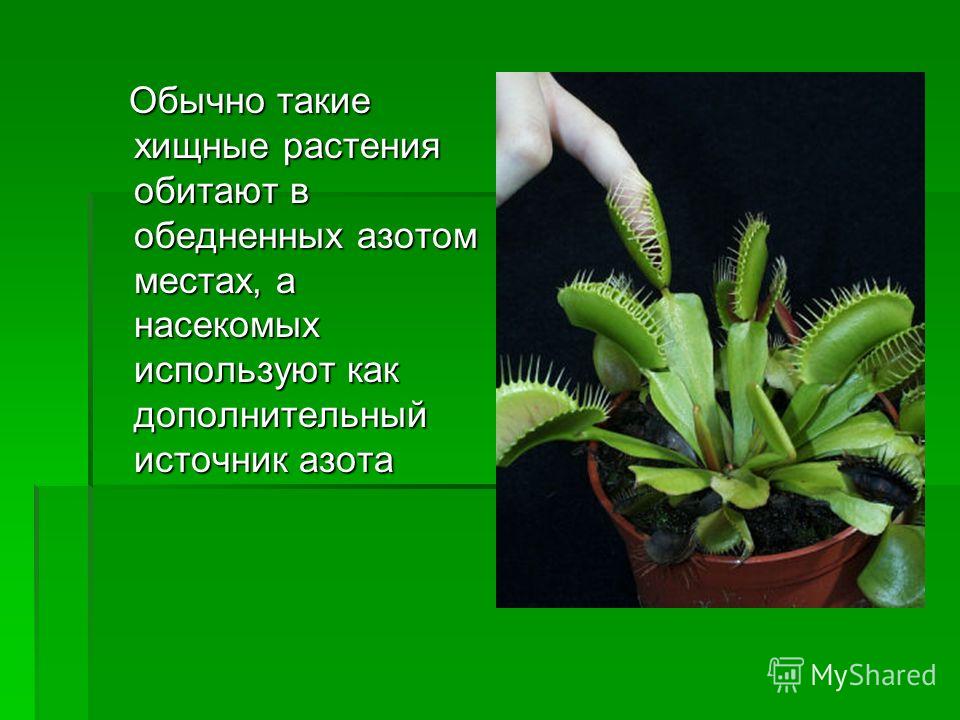
In some carnivorous plants (sunflower, oilseed, etc.), the leaves are covered with numerous glands that secrete a sticky transparent liquid that attracts insects and sticks them to the leaf. In some carnivorous plants (sunflower, oilseed, etc.), the leaves are covered with numerous glands that secrete a sticky transparent liquid that attracts insects and sticks them to the leaf.
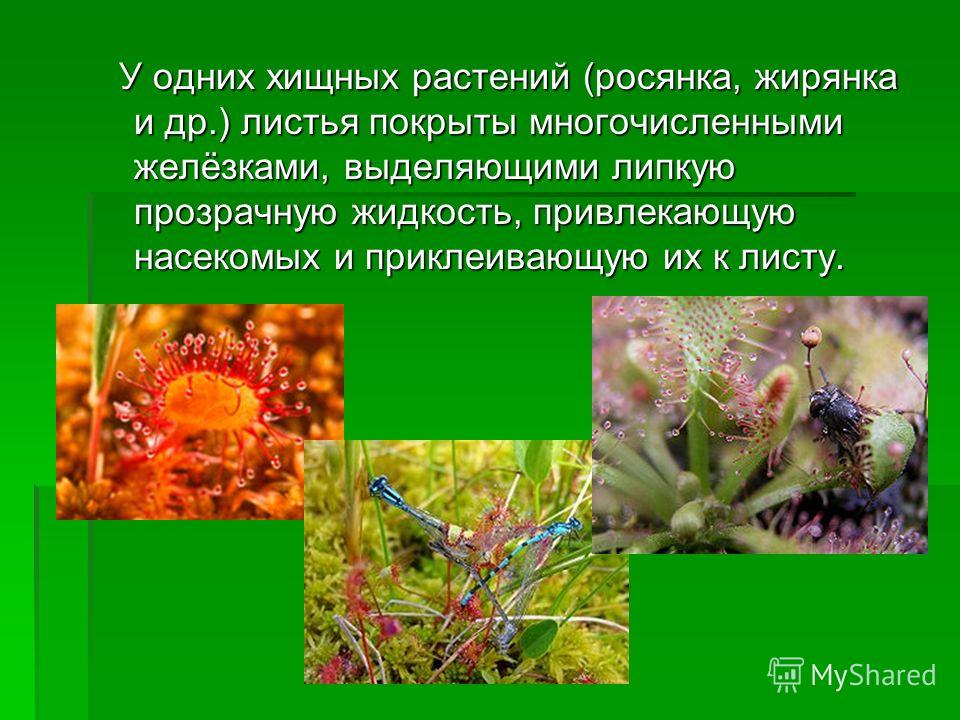
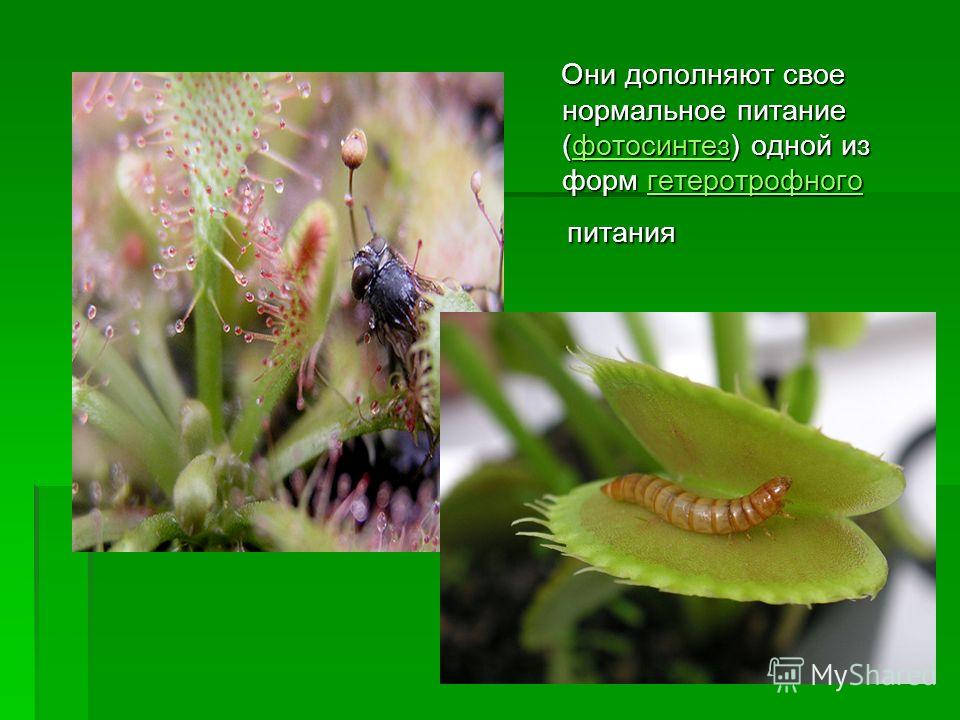
Venus flytrap On the inner half of the leaf there are hairs that secrete a sticky liquid. An insect touching them sticks and the trap closes. On the inner half of the leaf there are hairs that secrete a sticky liquid. An insect touching them sticks and the trap closes
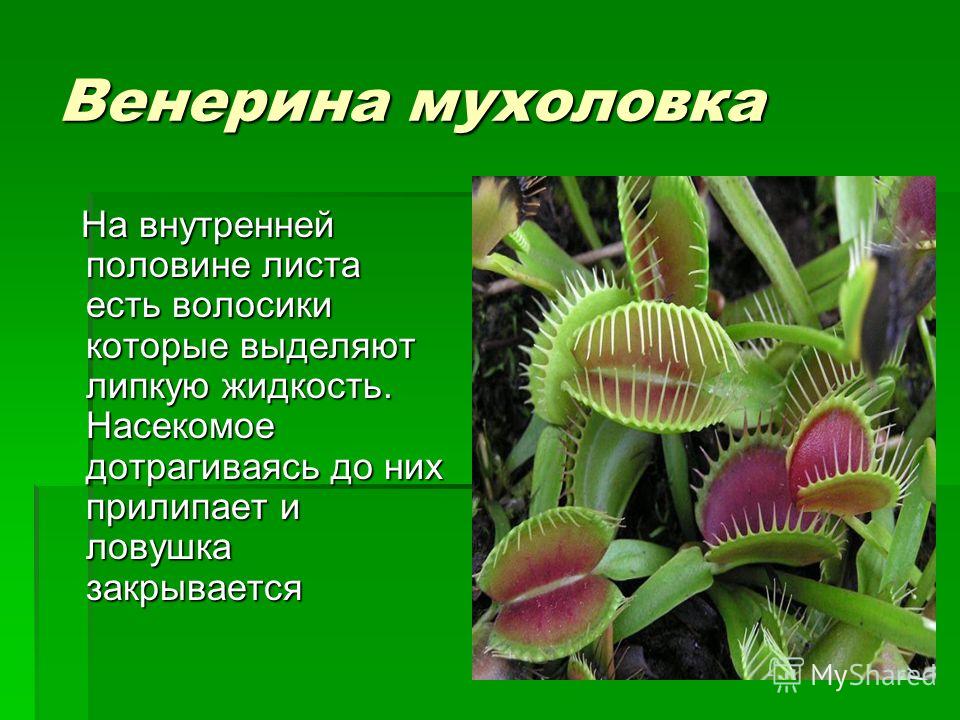
In other predatory plants, the trapping apparatus is represented either by passively trapping insect urns (nepenthes, sarracenia, darlingtonia, etc.) or by active traps (dyonea, pemphigus, etc.). In other predatory plants, the trapping apparatus is represented either by passively trapping insect urns (nepenthes, sarracenia, darlingtonia, etc.) or by active traps (dyonea, pemphigus, etc.).
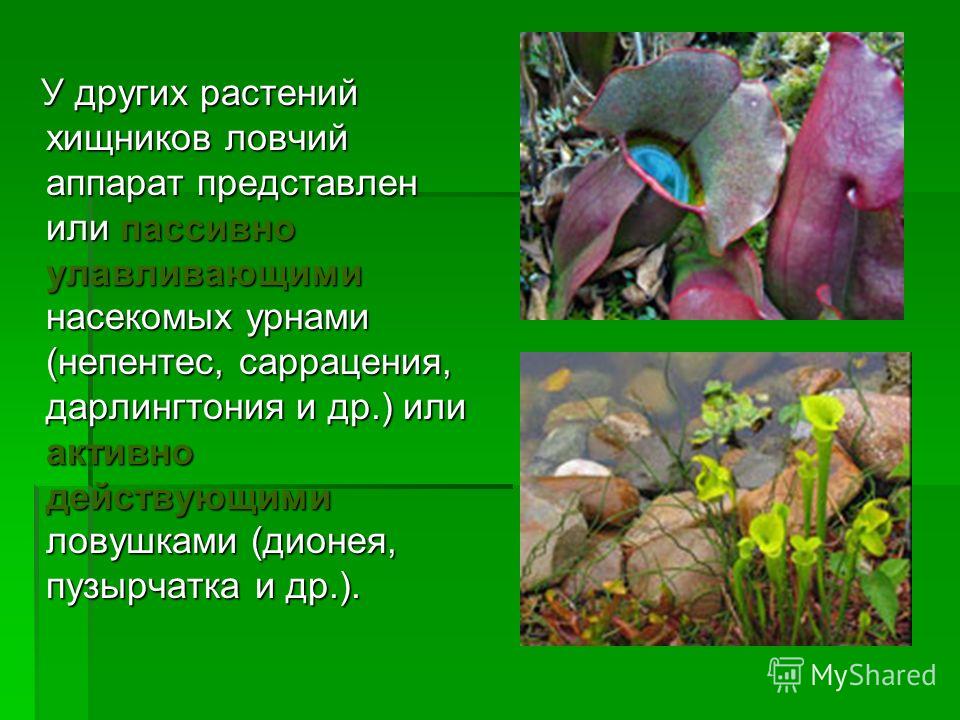
Pemphigus vulgaris On the underwater leaves of this predatory plant there is a huge number of bubbles that work like a valve. When an insect touches them, they instantly suck it inside the plant. On the underwater leaves of this predatory plant, there are a huge number of bubbles that work like a valve. When an insect touches them, they instantly suck it into the plant
